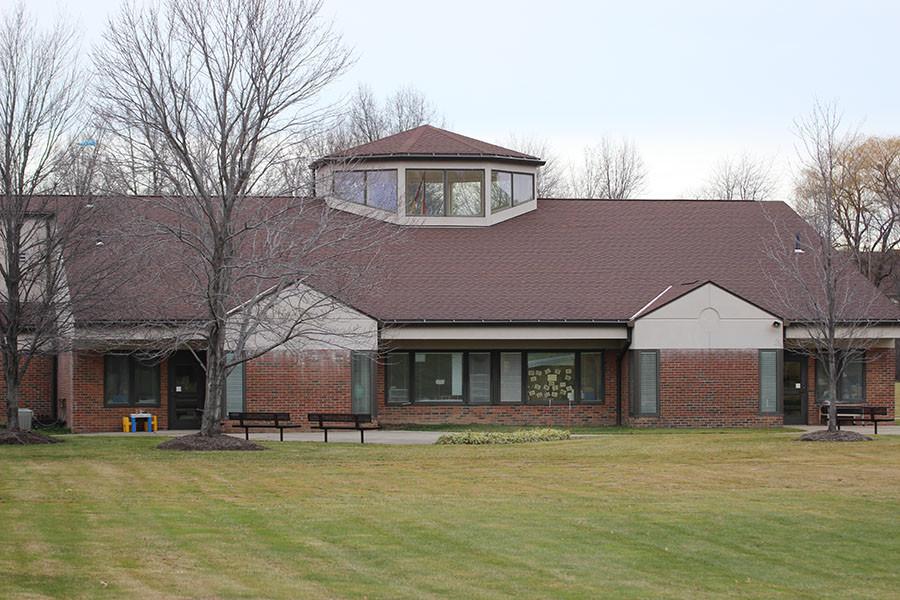School District Leaders Seek Voter Approval For Elementary Consolidation Project
In a joint presentation on Nov. 16, Superintendent Bob Hardis and Treasurer Michele Mills gave two possible visions of the future for the Beachwood City Schools.
One vision involves spending millions to renovate the current structure of the elementary schools, while the other, for about the same amount of money, offers a dramatic shift into the future for both the city and the district.
“Ms. Mills and I, having considered all aspects of the future of our elementary buildings, have determined that our recommendation to the Board of Education is to proceed with consolidating our elementary schools,” he said.
The consolidation of the facilities at Bryden Elementary School, Hilltop Elementary School and Fairmount Early Childhood Center into one school on the Fairmount site is one aspect of this new arrangement.
The Bryden property would be sold off to a housing developer, and the Hilltop property would transform into a hub for district athletic facilities.
One of Hardis’s main reasons for this recommendation was the state of the Hilltop and Bryden buildings.
“The main factor was the age of the buildings,” he said. “They were both built in 1956, and their needs, [such as] infrastructure, are what drove looking at potentially consolidating instead of renovating.”
Another factor is efficiency.
“Consolidation makes sense because operating three separate buildings instead of one consolidated one is inherently inefficient,” Hardis added.
Renovation, if chosen, could indeed prove costly in both time and money.
It would involve an expenditure of $34.7 million and would require gutting and renovating classrooms, asbestos abatement, repairing brick veneer, floors, as well as heating and cooling systems among other things.
This does not take into account the potential discovery of more problems with the buildings, which would involve even more time and money to the renovation of nearly 60-year-old facilities.
Consolidation at the Fairmount site would require voter approval of a bond levy, in 2017 or 2018, right around the time that an unrelated operating levy is also planned for the ballot.
The project would also require an initial expenditure of $35.7 million dollars, some of which will be offset by the sale of the Bryden property.
The need for an operating levy on the ballot is partly due to the phase out of revenue from the tangible personal property tax (TPP), which currently provides about $1.87 million dollars to the district.
According to Mills, the TPP is being phased out by the state government to the tune of about $636,000 a year, with the 15-16 school year being the first year of this process.
This process is being slowed by Ohio Senate Bill 208, which introduced a supplement reinstating 96% of the combined TPP losses for both the 15/16 and 16/17 school years.
This supplement will begin to depreciate by $625,00 as well, starting in the 18/19 school year.
The TPP is scheduled to phase out at the beginning of the 19/20 school year, with the supplement disappearing at the beginning of the following year.
In layman’s terms, all funding related to the TPP will be gone at the beginning of the 20/21 school year, which makes a levy necessary by that time.
Hardis is confident that Beachwood voters would continue to support the district, even if they don’t have children in the affected schools.
“I am very confident that the voters of Beachwood will support the schools. They always have in the past,” he said. “We have unbelievable community support.”
However, in order to earn public support on this issue, district leaders will work to convince voters that consolidation is the better option.
“We need to go out there and explain in very transparent and clear ways why the best financial and educational decision for this community is going to be to consolidate elementary schools into a new addition on the Fairmount site,” he said.
Consolidation would also entail the use of Ohio Facilities Construction Commission funding, which would reimburse the district up to five percent up to a certain amount of square footage, on a room by room basis.
This reimbursement would not come for at least a couple years after the construction, due to the OFCC’s reimbursement process, which prioritizes based on need.
Because Beachwood is a more affluent district when compared to a large portion of Ohio communities, it would be near the end of the reimbursement list. However, once reimbursement is promised, it is guaranteed to occur eventually.
This means that the district and the city must be ready to fund the consolidation on its own.
However, the proposal to potentially consolidate is not without concerns from residents. These concerns seem to fall into two categories.
The first is education-oriented.
“Some people like having two smaller elementary schools, with just three grades in them,” Hardis said. “They like that Bryden has grades K-2, and that Hilltop has grades 3-5; they like that these buildings have 300 kids in them and that they feel small.”
The second is focused on what would become of the Bryden property.
“They want to know that what gets built there eventually doesn’t decrease the value of their home.” he said.
Hardis wants to reassure residents.
“What we intend to do is protect that property so that single family homes are built there,” he said. “So that [when] the property is auctioned off, it is auctioned off under the strict conditions that the only thing that can be built there is a single family housing development.”
“We hope that it attracts new families into Beachwood,” he said.
The potential sale of the Bryden property, valued conservatively at $1 million dollars, would bridge the gap in expenditures between consolidation and renovation, as well as generate an estimated $125,00 in annual tax revenue.
Consolidation is likely to result in staff adjustments, including some layoffs.
“We anticipate that there will be some jobs [with consolidation] that will become redundant,” Hardis said. “There would be a few layoffs, probably across all classifications of staff.”
“We are going to look for the most efficient and effective way of running our schools, [while also considering] what the impact on education will be,” he said.
Should consolidation occur, Hardis said great care will be placed on choosing the most appropriate contractors, architects and construction management firms for the project.
“Selecting the right people for the work is of critical importance.” he added.
Overall, Hardis said he is pleased by the reception the proposal received from all facets of the community.
“Generally speaking, the feedback I have heard has been positive,” he said. “They have said that the presentation [Mills] and I gave was very thorough, and laid out clearly why consolidation makes so much sense.”
The first community Q&A session on consolidation and the athletic facilities project will be held at Fairmount on Jan. 25 at 6:30 p.m.

Alex Cala has been writing for The Beachcomber since the fall of 2014, when he was a sophomore. He became the opinion editor the following year. Alex tends...













